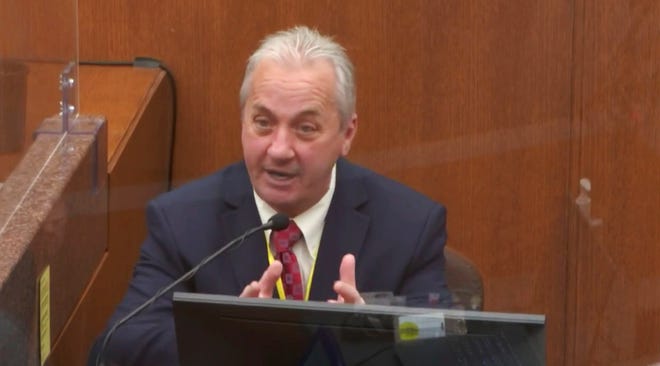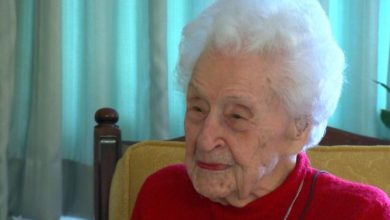

As Ohio readers climb the hills of Appalachia, enjoy life in suburban Cleveland, tour the Thurber House in Columbus or think about history in the Ohio Valley, they should be pleased to know that authors have been there before them.
The state has served as the setting for a variety of novels, both for adults and children. We considered many of them and came up with this list of a dozen that shouldn’t be missed, regardless of whether you’re an Ohioan or not fortunate enough to live in the Buckeye State.
Note: Some covers may be reissues or paperback.
Book-buying guide:Giving the gift of reading this holiday season? Buying early is wise amid book supply-chain problems

“American Splendor” (1976-2008) by Harvey Pekar
Setting: Cleveland
Overview: In these autobiographical comic books, Pekar captured his everyday life, including car troubles; his work at a veteran’s affairs hospital; relationships with his second and third wives, his adopted daughter and other family members; and his regular appearances on “Late Night With David Letterman,” all presented in comics panels with a sarcastic edge. Although Pekar himself couldn’t draw, he recruited his friend, underground comics artist Robert Crumb, and later, other artists, to bring his sardonic scripts to life. Paul Giamatti starred as Pekar in the 2003 film, “American Splendor.” Pekar died in 2010.
Ohio books:State’s new literary trail has stops in central Ohio

“Beloved” (1987) by Toni Morrison
Setting: Cincinnati
Overview: Considered one of the best works of American fiction from the late 20th century, the novel — partly a ghost story — is set in southern Ohio after the Civil War. Inspired by a true incident, the story concerns an escaped slave who, upon being captured, kills her 2-year-old daughter rather than having her become a slave. “Beloved” won the 1988 Pulitzer Prize for Fiction. That same year, Morrison said that since the United States didn’t have any landmarks honoring the memory of those brought to this country and forced into slavery, she wanted her book to honor them. In 2006, on Morrison’s 75th birthday, the “Bench by the Road” project was launched, placing benches at significant sites in the history of American slavery. In 2009, Morrison helped unveil a bench at Oberlin University in Lorain County, where she was born. “Beloved” was adapted into a 1988 film starring Oprah Winfrey. Morrison won the Pulitzer Prize for literature in 1993. She died in 2019.

“Betty” (2020) by Tiffany McDaniel
Setting: Southeastern Ohio
Overview: McDaniel's bittersweet, often shocking novel is based on the life of her mother, who grew up in the Appalachian hills with a Cherokee father, a moonshiner and herbalist whose connection to the natural world influenced her deeply. The novel begins in the 1930s with the lives of the parents of the title character and then follows her through her childhood and adolescence in the 1960s. “I wrote 'Betty' to celebrate the voices of my family, and in particular the voices of women in my family,” McDaniel said in an interview with Entertainment Weekly. “Betty” won the 2021 Reader's Choice Ohioana Book Award.

Ohio and entertainment:Columbus native Wil Haygood examines history of Black actors in films in his new book
Setting: Piqua
Overview: Fourth-grade pranksters and comic-book creators George and Harold star in this first of a series of hugely popular, easy-reading chapter books by Cleveland-born and Caldecott Award-winning Pilkey In the story, the boys use hypnosis to convert no-nonsense school principal Mr. Krupp into their comic-book hero Captain Underpants, who then proceeds to a face-off with the evil Dr. Diaper. Although the books have frequently been challenged as unsuitable for children by those offended by their abundance of potty humor and wedgie jokes — (the first one won the dubious honor of being the most-challenged book for libraries in 2013) — they've won wide praise for encouraging kids who might otherwise never voluntarily pick up a book to read.

Setting: Ross County
Overview: An unstrung World War II veteran and his son, a pair of serial killers and a licentious preacher cross paths in mid-20th-century southern Ohio in Pollock's disturbing debut novel, which Josh Ritter of the New York Times called “as sickly beautiful as it is hard-boiled.” Pollock worked for more than 30 years in a paper mill in Chillicothe before enrolling in the Master of Fine Arts program at Ohio State University, where he completed “Knockemstiff,” the collection of stories that preceded this novel. The novel was made into a 2020 film directed by Antonio Campos, with Pollock providing the voiceover narration.

Setting: Shaker Heights
Overview: Set in the late 1990s in the town in which Ng grew up, the novel focuses on two women and their families. Elena Richardson and her husband and children are white, upper class and liberal. Mia Warren, an artist, and her daughter, Pearl, are African American. Their stories collide and culminate with a fire that destroys the Richardson house. The bestselling novel was adapted for a 2020 miniseries starring Reese Witherspoon and Kerry Washington. In her online book club, Witherspoon wrote about “Little Fires Everywhere”: “This story of two families in Ohio moved me to tears. Celeste Ng writes with stunning accuracy about the power of motherhood, the intensity of teenage love and the danger of perfection — and the fire that destroys it all.”

Setting: Southwestern Ohio
Overview: Hamilton set her children’s mystery in a small fictional community like Yellow Springs, where she was born. The story concerns Thomas Small, a 13-year-old African American boy who has moved with his family, including his history professor father, from North Carolina to Ohio. They move into what was once the home of the abolitionist Dies Drear and which may be haunted by the ghosts of two escaped slaves and Dies Drear himself. Complicating the story is a treasure and an unscrupulous family who wants it. The novel, followed by Hamilton with “The Mystery of Drear House,” won the Edgar Award for best juvenile book in 1969. Hamilton’s books for young readers are captivating and intelligently written, far more sophisticated than most books targeted for middle school and young-adult readers.

“My Life and Hard Times” (1933) by James Thurber
Setting: Columbus
Overview: A master of deadpan prose and the creation of eccentric characters, Thurber produced probably his greatest work with this autobiography. Writing in The New York Times, Russell Baker called it “possibly the shortest and most elegant autobiography ever.” Among the denizens of the Thurber household: Muggs, a dog who bites people; a grandfather who is convinced the Civil War is still being fought; and the mother concerned about the electricity that’s leaking all over the house. Read this book before and after visiting Thurber House, the 77 Jefferson Ave. boyhood home of the author. And pay your respects to the Airedale Muggs at his new sculpture, recently installed at Green Lawn Cemetery.
James Thurber in Columbus:Dispatch@150: Alums Thurber, Ireland left behind legacies, locally and nationally

Setting: Fictional town in Ohio
Overview: Melody, a brilliant 11-year-old with a photographic memory, has cerebral palsy and cannot speak. Her frustration is limitless until she acquires a computer that gives her a voice and allows her to demonstrate her intelligence and determination. All does not end well, however, as the community around Melody is not as resourceful and adaptive as she is when it comes to people with disabilities. Draper’s sequel to this surprising and realistic novel is titled “Out of My Heart” and was recently published. Draper, born in Cleveland and living in Cincinnati, was the 1997 National Teacher of the Year.
'Out of My Mind' sequel:Ohio native Sharon Draper pens new book, 'Out of My Heart'

“A Simple Plan” (1993) by Scott Smith
Setting: Northern Ohio, near Toledo
Overview: Smith's flawlessly structured thriller, described by the Washington Post's reviewer as “a work of deceptive simplicity and singular power,” follows its unassuming, more or less well-intentioned hero as he and two friends discover an airplane that has crashed, leaving a dead body and millions of dollars in cash, as step by step, decision by decision, they follow a path that leaves inevitably to destruction. Smith, who grew up in Toledo, was nominated for an Oscar for his film adaptation of the novel for the 1998 movie directed by Sam Raimi.



“The Trees” (1940), “The Fields” (1946) and “The Town” (1950) by Conrad Richter
Setting: The Ohio Valley
Overview: Richter's masterful, thoroughly researched trilogy, later published in one volume as “The Awakening Land,” follows a family of settlers in the Ohio Valley area, beginning near the end of the 18th century. Central to the story is Sayward Luckett (a young girl when the first novel begins), whose life changes are linked to those in the place where she lives. Mansfield author Louis Bromfield, writing about “The Fields” at the time of its publication, praised it for its “beauty, form, historical significance, and at the same time reality and the magic which accompanies illusion.”

Setting: Sandusky County
Overview: Anderson's tales of dozens of unhappy citizens of a small town in northern Ohio make up one of the first examples of short stories linked into a larger whole. Themes of loneliness and isolation form a common bond between characters who don't themselves recognize how much they share. Writing in defense of the book to those who thought he was too critical toward his characters, Anderson said that the book was “an effort to treat the lives of simple, ordinary people in an American middle western town with sympathy and understanding.”








